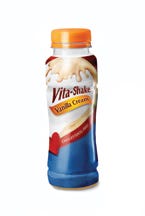Roll-fed labels take on shrink sleeves for tough contours
Roll-fed labels that mimic the look of shrink sleeves: that is the claim being made by the label films division of plastics supplier Dow Chemical Co. (Midland, MI) for the company’s two new shrink-label films for roll-fed shrink labels. New are Opticite 48 roll-fed and Opticite 61 roll-fed shrink-label films, additions to the supplier’s Opticite label films’ range.
September 17, 2009
Roll-fed labels that mimic the look of shrink sleeves: that is the claim being made by the label films division of plastics supplier Dow Chemical Co. (Midland, MI) for the company’s two new shrink-label films for roll-fed shrink labels. New are Opticite 48 roll-fed and Opticite 61 roll-fed shrink-label films, additions to the supplier’s Opticite label films’ range.
|
According to Dow, these polystyrene-based films provide greater than 40% shrinkage in the machine direction, even on highly contoured containers, in hot-air, infrared, and combination shrink tunnels. “This new film opens an entirely new category for high-shrink roll-fed applications. The simple explanation is that you can get the look of a sleeve with the cost and efficiency of a roll-fed process,” explains Chuck Carn, the senior market development specialist at the company. With roll-fed labels, a converter can offer the appeal of full-body contoured labels while reducing off-line seaming and the inspection steps typical in the production of transverse-direction shrink sleeves, claims Dow.
Full-body shrink-film labels are processed via cast-film extrusion, with transverse direction orientation (TDO), then printed, seamed, and applied on-site or, more often, shipped. End users, typically brand owners, run them through shrink tunnels where heat generated by steam or infrared radiation causes labels to shrink to the contours of the underlying packaging. Tunnels follow filling equipment if the label acts as a tamper-evident seal. But the new label films from Dow are only oriented in the machine direction, with very little shrinkage in the transverse direction, reports Carn. The standard material for roll-fed shrink applications is bioriented polypropylene (BOPP), but shrinkage of this is limited to about 15%, he says. Dow’s films and their high shrink rate could offer a lower-cost option for decorating crazily contoured packaging.
Carn’s colleague Julie Hatlewick, senior development specialist, adds that while many films can achieve 70% shrinkage in laboratory testing, the actual shrinkage achievable with a high-quality appearance (i.e. no defects) is typically less than cited by a lab test. Opticite films are no different, she said, hitting 70% shrinkage in lab tests, but 40% shrinkage is more realistic in commercial use.
The new Dow films are suitable for use with traditional hot melt adhesive, solvent, or ultraviolet-curable adhesive, as well as with laser and ultrasonic seaming systems. —Matt Defosse
About the Author(s)
You May Also Like



